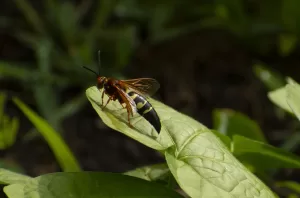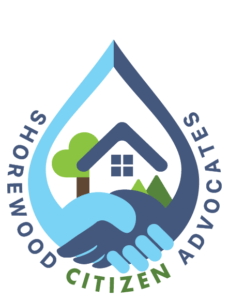Revised May 16, 2024
Note: This content has been archived and may no longer be accurate or relevant
Some video links may have expired
Update: They are here! See the updated map as of May 3rd, 2024. Reader RA, of Chaska, reported seeing a hummingbird looking for a feeder, in his yard, on April 14.
Spring is here and so is news on some of our favorite–and possibly less favorite–natural neighbors.
According to UpNorthNews, hummingbirds are on their way north, expected to reach Minnesota and Wisconsin in another week (approx. April 20), depending on warm southerly winds. As of April 12, they were seen as far north as Des Moines and Chicago.
Hummingbird and nectar feeders should be put out by May 1st because they may be visited by warblers as well as early-returning hummingbirds and Baltimore orioles. Learn more about safely attracting hummingbirds.

By now, you have heard about “Cicada-geddon,” so called because the natural happening this summer will be the convergence of several cyclical hatchings of the hissing insect.
The 13-year cicadas, called Brood XIX, will emerge in Georgia and the Southeast. The 17-year cicadas, called Brood XIII, will appear in Illinois. This will be the first time since 1803 that two broods emerged at the same time. The next time this happens will be 2037. — CBS News
Fortunately, or not, this burst of cicadas will not directly affect Minnesota. The closest it is forecast to come is southern Wisconsin. Minnesota cicada numbers should remain static.
They [Cicadas] look a little like cockroaches and have bulging orange eyes, and trillions of them are about to erupt from the earth in much of the Midwestern and eastern United States. The emergence of two groups of cicadas will assemble a chorus of the insects not seen in several hundred years, experts say. – The Guardian

— University of Minnesota Extension
With the presence of cicadas, will come the Cicada Killer Wasps. They are 1 – 1 1/2 inches long. They have a black and reddish brown thorax, amber colored wings, reddish brown legs, and a black abdomen with yellow bands. These wasps are common around our Lake Minnetonka area.
The wasps usually burrow into the soil to nest in open, sandy, sunny areas. They appear in July and August. Nests are easily spotted by their large mounds of dirt. Despite their size, there is very little risk for stings from the wasps.
The cicada killer wasp gets its name from, as you would guess, killing cicadas. The female cicada killer wasp has a stinger that she uses to inject venom into cicadas, not killing the cicadas but instead paralyzing them. She then flies the cicada to her nesting area, dragging it underground. –– University of Nebraska.
Read more about local environment and government topics.


Was this post useful?
Average rating 5 / 5. Vote count: 2
No votes so far! Be the first to rate this post.












